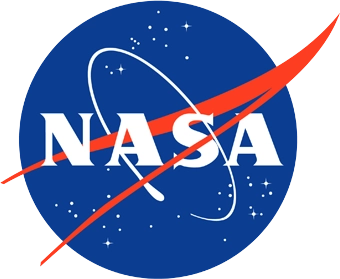Science News
Showing 1 to 24 of 6835.
Imelda and Humberto Crowd the Atlantic
2025.09.30
The tropical cyclones are close enough in proximity that they may influence one another.
Drought Worsens Across Northern New England
2025.09.27
In late September 2025, a continued lack of rainfall led to stunted vegetation, lowered water levels, and prompted early fall foliage.
Inside the Visualization: Aerosols
2025.09.26
NASA uses satellites, ground measurements, and powerful computer models to track tiny particles floating in our air called aerosols. These small particles can travel thousands of miles, affecting the air we breathe and how far we can see, even far from where they originated.
Land of Many Waters and Much Sediment
2025.09.26
The Guiana Shield’s rugged terrain shapes Guyana’s waterways, but mining has altered their clarity.
NASA-ISRO Satellite Sends First Radar Images of Earth’s Surface
2025.09.25
The NISAR (NASA-ISRO Synthetic Aperture Radar) Earth-observing radar satellite’s first images of our planet’s surface are in, and they offer a glimpse of things to come as the joint mission between NASA and ISRO (Indian Space Research Organisation) approaches full science operations later this year.
NASA Data Powers New Tool to Protect Water Supply After Fires
2025.09.24
When wildfires scorch a landscape, the flames are just the beginning. NASA is helping communities across the nation foresee and prepare for what can follow: mudslides, flash flooding, and contaminated surface water supplies.
NASA Aircraft Coordinate Science Flights to Measure Air Quality
2025.09.24
This summer, six planes collectively flew more than 400 hours over the mid-Atlantic United States with a goal of gathering data on a range of objectives, including air quality, forestry, and fire management.
Ragasa Steers Toward China
2025.09.24
The super typhoon headed for Guangdong province after lashing northern Luzon in the Philippines.
A Golden Moment for Boreal Forests
2025.09.23
Hillsides in Alaska’s interior showed their changing colors ahead of the autumnal equinox.
Reshaping the Forests Around Kisangani
2025.09.22
Satellite data show decades of gradual but persistent change to forests around one of the Democratic Republic of the Congo’s largest cities.
Arctic Sea Ice Ties for 10th-Lowest on Record
2025.09.19
Satellite data show that Arctic sea ice likely reached its annual minimum extent on September 10, 2025.
Cooper Creek Replenishes Lake Eyre
2025.09.18
Another major tributary reached the Australian outback lake in 2025, extending the months-long flood of the vast, ephemeral inland sea.
Arctic Sea Ice Reaches Annual Low
2025.09.17
With the end of summer approaching in the Northern Hemisphere, the extent of sea ice in the Arctic shrank to its annual minimum on Sept. 10, according to NASA and the National Snow and Ice Data Center
Smoky Skies in the Pacific Northwest
2025.09.16
Smoke filled river valleys in northeastern Washington and parts of British Columbia.
Webinar Series: Teaching with EMERGE & GLOBE Mission Mosquito
2025.09.16
Educators, join our free two-part webinar, and learn about bringing coding and citizen science to your learners!
Greenland Ice Sheet Gets a Refresh
2025.09.13
A moderately intense season of surface melting left part of the ice sheet dirty gray in summer 2025, but snowfall has since freshened its appearance.
A Giant Iceberg’s Final Drift
2025.09.11
After a long, turbulent journey, Antarctic Iceberg A-23A is signaling its demise as it floats in the South Atlantic.
NASA Data, Trainings Help Uruguay Navigate Drought
2025.09.10
NASA satellite data and trainings helped Uruguay create a drought-response tool that its National Water Authority now uses to monitor reservoirs and guide emergency decisions. A similar approach could be applied in the United States and other countries around the world.
Monsoon Rains Flood Pakistan
2025.09.10
Heavy rains and flooding across the country since June 2025 have displaced millions of people, devastated infrastructure, and submerged farmland.
Dust in the “Eye” of the Tarim Basin
2025.09.10
Satellites have observed episodes of dust swirling across the basin in western China for decades.
Hurricane Kiko Nears Hawaii
2025.09.09
The storm became a major hurricane while traversing the eastern Pacific but weakened as it approached the islands.
Alaska’s Brand New Island
2025.09.08
A landmass that was once encased in the ice of the Alsek Glacier is now surrounded by water.
Summer Heat Lingers in the West
2025.09.05
A prolonged high-pressure weather system brought unusually warm September temperatures to British Columbia and the Pacific Northwest.
B.C. Wildfires Send Smoke Skyward
2025.09.04
Lightning likely ignited several large fires that sent smoke pouring over the Canadian province in early September 2025.
Showing 1 to 24 of 6835.
